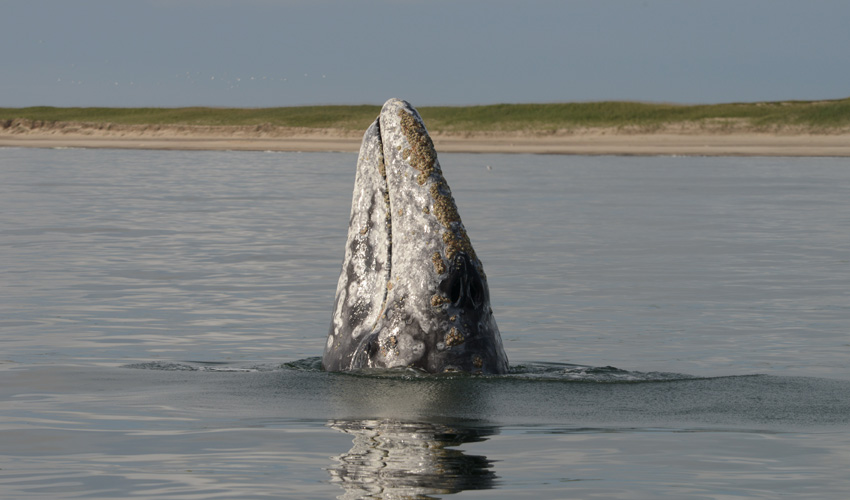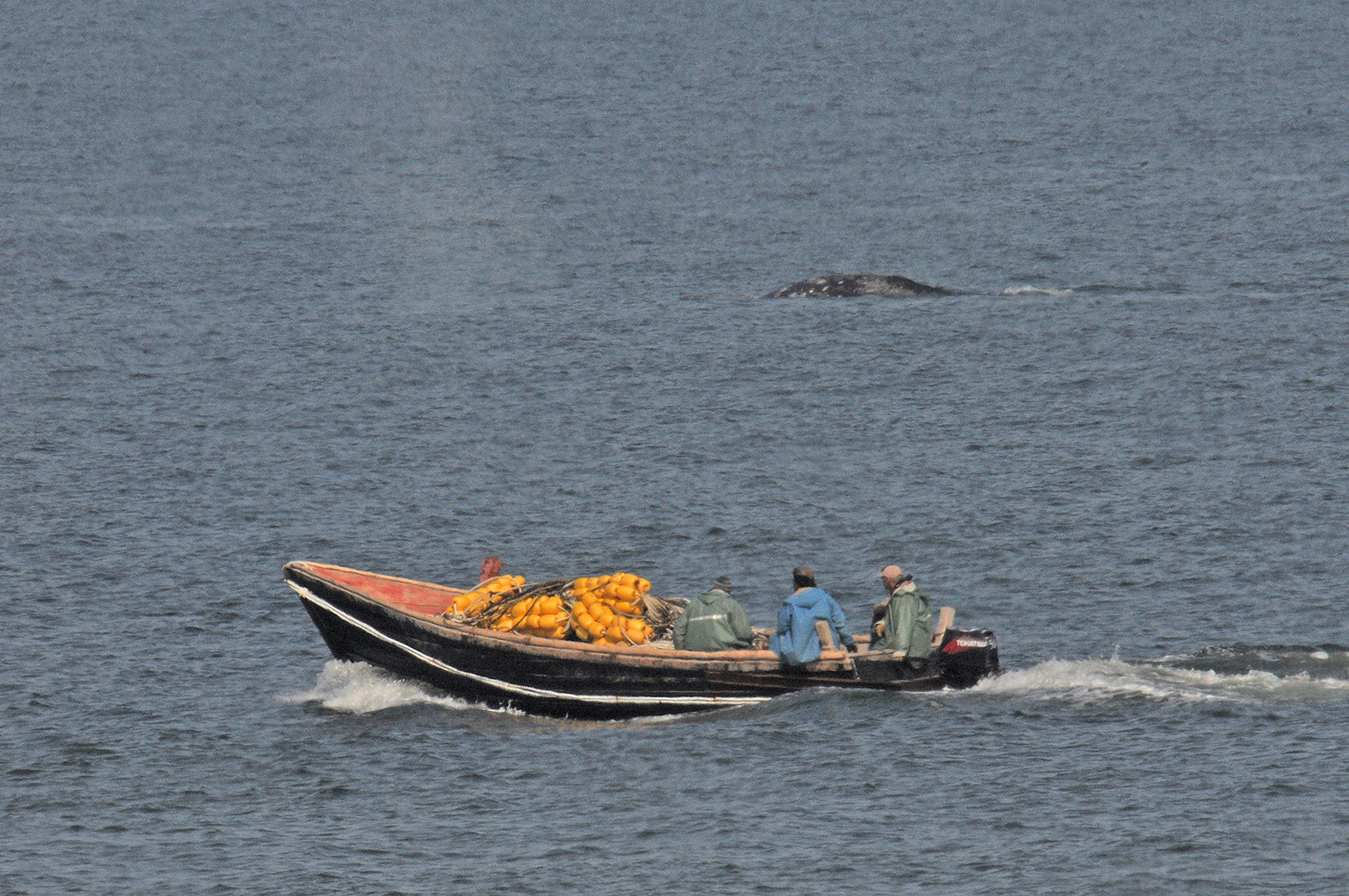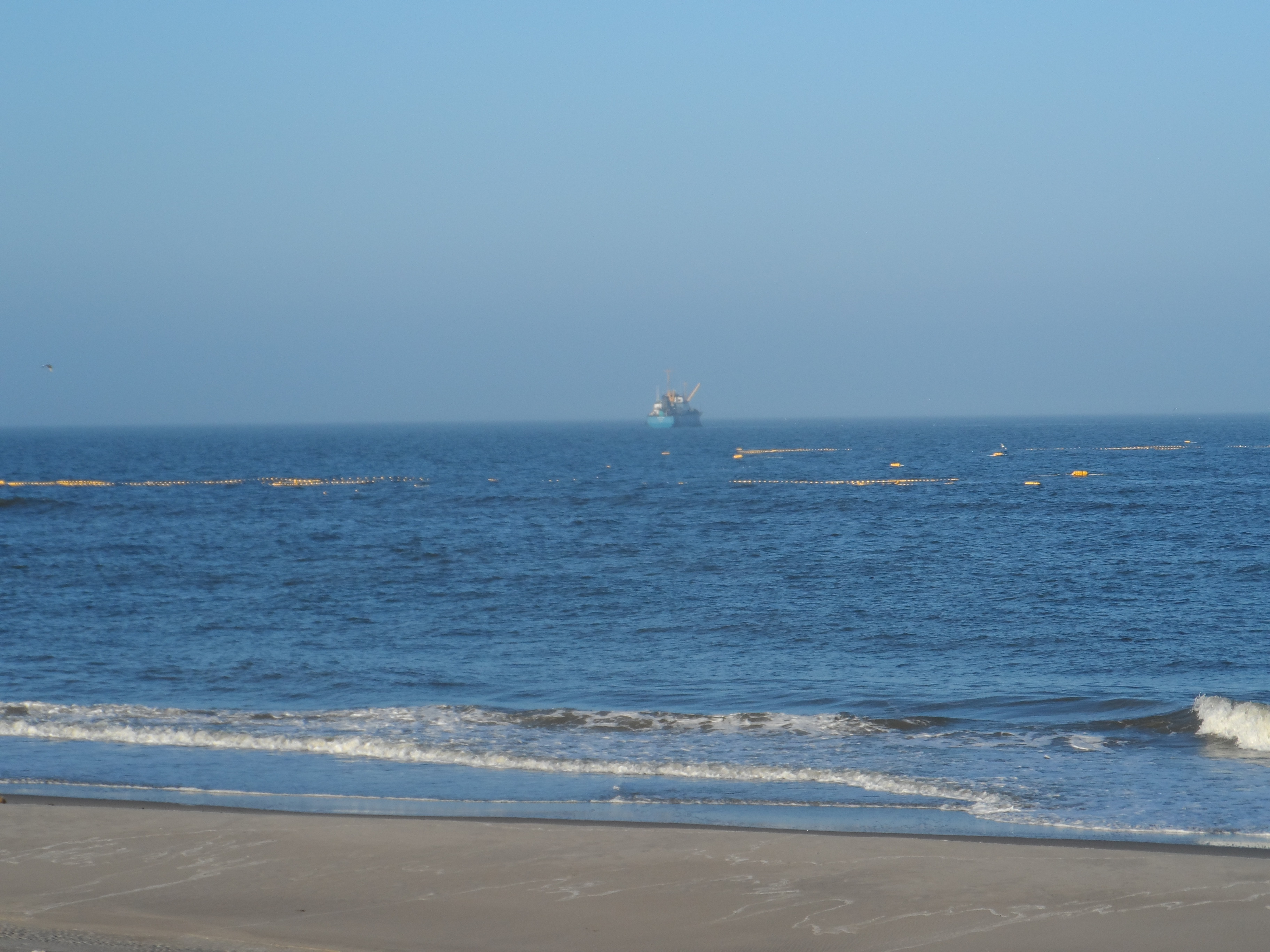Western gray whales at great risk from salmon nets – IUCN-backed study
Gland, Switzerland (IUCN) - A new IUCN-backed scientific article published today finds that threatened western gray whales are at “very high risk” of entanglement in coastal salmon nets near Russia’s Sakhalin island, which often leads to their injury or death. This adds to risks associated with the ongoing intensive oil and gas development in the area and other pressures this population is facing throughout their range.
“While options may exist to modify fishing gear and reduce the risk of entanglement to this whale population, the only way to eliminate the risk is to stop the deployment of salmon set nets in or near the areas being used by the whales,” says Lloyd Lowry, a member of the Cetacean Specialist Group of IUCN’s Species Survival Commission (SSC) and the lead author of the paper published in Endangered Species Research. “Now that we have identified and mapped these entanglement hotspots, it is a high priority to act without delay as this population is already under considerable pressure.”
The paper maps and analyses the overlap between fishing activity and the distribution and migration of western gray whales, as well as fishing gear likely to be harmful to the whales. It finds that the coastal salmon net fishery off Sakhalin island, north of Japan, represents the highest risk, compared to other types of commercial fisheries operating in the Russian Far East. The authors recommend that the Sakhalin Government stop issuing permits for salmon nets to be used near the whales’ coastal feeding grounds and migratory routes, where this gear is concentrated.
While instances of entanglement and entrapment of whales in fishing gear, known as bycatch, are not monitored systematically in the Russian Far East, the paper presents evidence of such cases involving gray whales in many parts of their range in the North Pacific, including off Sakhalin Island, Kamchatka, Kuril Islands, Japan, China and USA. For example, photographs have shown that around one out of five gray whales off Sakhalin bears signs of at least one injury from fishing gear.
“Entanglement in fishing gear causes hundreds of thousands of whales, dolphins and porpoises to die annually,” says Greg Donovan, Head of Science at the International Whaling Commission (IWC) and Co-chair of IUCN’s Western Gray Whale Advisory Panel (WGWAP). “In addition, an unknown number die from ingesting or becoming entangled in marine debris, much of which originates from the fishing industry. Some animals drown while others tow heavy, tightly wrapped fishing lines which can cut through their skin and blubber causing infection, starvation and even amputation of fins or tails. It is for this reason that the IWC has established a bycatch mitigation initiative.”
In Sakhalin, the nets of greatest concern are large structures set perpendicular to the coast and attached to the beach with high, meshed fence-line that extends 1-3 km or more offshore, overlapping the areas used by whales, including mothers with calves. These nets used for salmon fishing obstruct whale movements and result in entanglements or entrapments. Young and unexperienced calves are particularly vulnerable.
“The information on fisheries provided by this paper not only makes it possible to better evaluate the risks to western gray whales, but also opens the possibility of investigating the bycatch risks to other marine mammals in the region more rigorously,” says co-author Randall Reeves, Chair of IUCN SSC Cetacean Specialist Group and WGWAP Co-chair.
Gray whales off Sakhalin island were discovered during the 1980s. The feeding areas near Sakhalin – a region with large offshore oil and gas deposits, and active exploitation of other natural resources such as fisheries – are used by the whales every summer and are vital for maintenance of the population.
Further cooperation and involvement of all companies and industries in the region – fisheries, oil and gas operators, shipping and tourism – are critical to minimise cumulative impacts and ensure implementation of best practices and the long-term protection of the animals, according to a joint report previously published by IUCN, WWF and the International Fund for Animal Welfare (IFAW).
The scientific paper, Entanglement risk to western gray whales from commercial fisheries in the Russian Far East, was produced within the framework of the WGWAP process. The Panel’s overall goal is providing objective independent advice on the conservation of western gray whales with a focus on those that feed off Sakhalin.
Note to Editors:
- To read the full scientific paper, download in English here and in Russian here.
- This study will be discussed at the 10th International Conference of Holarctic Marine Mammals in Russia later this month.
For interviews, contact:
Goska Bonnaveira, IUCN Media Relations, at: +41 792760185; email: Goska.Bonnaveira@iucn.org
For more information:
Visit the IUCN’s Western Gray Whale Advisory Panel website.
See the video of the western gray whale being disentangled here.
About IUCN
IUCN is a membership Union composed of both government and civil society organisations. It harnesses the experience, resources and reach of its more than 1,300 Member organisations and the input of more than 13,000 experts. IUCN is the global authority on the status of the natural world and the measures needed to safeguard it.








